Browse Primary Sources
Locate primary sources, including images, objects, media, and texts. Annotations by scholars contextualize sources.
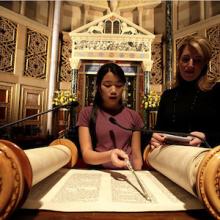
Bat Mitzvah
The girl in the photograph, Cecelia Nealon-Shapiro, reads from the Torah as part of her bat mitzvah, a rite of passage ceremony, at Congregation Rodeph Sholom in New York City. Prior to this day, she attended classes in Jewish history and tradition, Hebrew, and recitation at the Reform synagogue, where girls now participate in a rite formerly reserved for boys, the bar mitzvah.
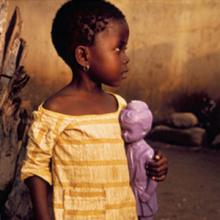
Child with Purple Plastic Doll near Kumasi, Ghana
The girl in the photograph is from the Asante peoples in Ghana. She is holding a purple plastic baby doll of a type that is frequently found in markets in Ghana. The doll is both imported from Taiwan and made domestically in Ghana. The modern plastic doll is based on an older, traditional form of wooden figurine manufactured by village blacksmiths to represent the adult, female figure.
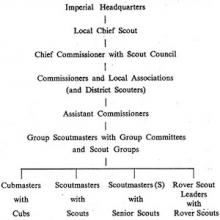
Organization of British Imperial Scouting
This chart shows the official lines of authority in the imperial Boy Scout movement. In theory, the Imperial Scout Headquarters had direct control over local versions of scouting through its territorial associations.

Pathfinder Warrant
Imperial scout headquarters and the national and territorial scout associations were deeply concerned with ensuring that only respectable and responsible men became scoutmasters. In colonial Africa, this meant that potential scoutmasters had to also respect the political realities of European minority rule.
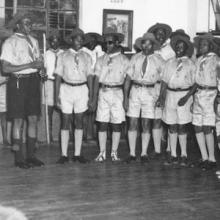
The Scout's and King's African Rifles Uniforms
The top photograph shows members of a South African scout troop specifically for blind adolescents and young men c.1950. The bottom photograph is of non-commissioned officers from the King's African Rifles in the mid-1950s. Note that both groups wear similar clothing consisting of khaki shirt and shorts, knee-length socks, clasp belts, and wide brimmed hats.
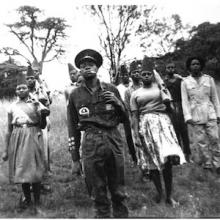
Mau Mau Fighters in Scout Uniforms
In the early 1950s, tens of thousands of poor and landless Kikuyus revolted against the Kenyan colonial government and wealthy members of their own community who were allied with the British regime. Known as the "Mau Mau Emergency," this rebellion was one of the most serious threats to British rule in Africa.
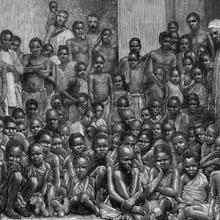
Captured Africans Liberated from a Slaving Vessel
The Graphic, a London periodical owned by liberal reformer William Luson Thomas, was not an abolitionist publication per se, but it did seek to inspire action against those causes that Thomas felt demanded immediate attention, such as poverty, crime, and slavery.
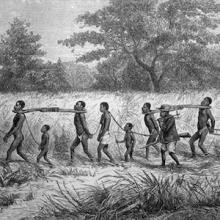
Slave Coffle, Central Africa, 1861
This image shows children and adults making their way from the African interior to the coast in a slave coffle. While some may think that children were given special treatment because of their age, and some may have, this image suggests that this was not always the case.
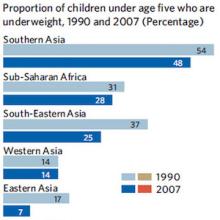
Millennium Development Goals: Child Malnutrition 2006
The Millennium Development Goals (MDGs) are eight goals related to poverty, education, gender equality, health, environmental sustainability and development set in the year 2000 at the UN Millennium Summit, and adopted by 189 nations.
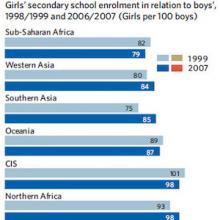
Millennium Development Goals: Gender Parity in Basic Education 2007
The Millennium Development Goals (MDGs) are eight goals related to poverty, education, gender equality, health, environmental sustainability and development set in the year 2000 at the UN Millennium Summit, and adopted by 189 nations.
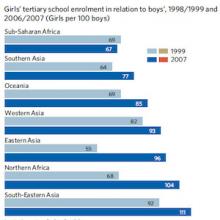
Millennium Development Goals: Gender Parity in Higher Education 2007
The Millennium Development Goals (MDGs) are eight goals related to poverty, education, gender equality, health, environmental sustainability and development set in the year 2000 at the UN Millennium Summit, and adopted by 189 nations.
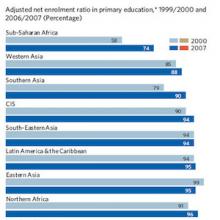
Millennium Development Goals: Primary School Enrollment 2009
The Millennium Development Goals (MDGs) are eight goals related to poverty, education, gender equality, health, environmental sustainability and development set in the year 2000 at the UN Millennium Summit, and adopted by 189 nations.
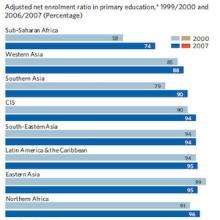
Millennium Development Goals: Primary School Enrollment 2009
The Millennium Development Goals (MDGs) are eight goals related to poverty, education, gender equality, health, environmental sustainability and development set in the year 2000 at the UN Millennium Summit, and adopted by 189 nations.
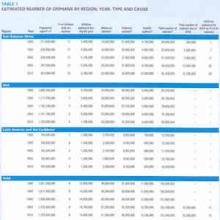
UNICEF Data on Orphans by Region to 2010
The definition of an orphan for statistical purposes is a child under 18 years old who has lost one or both parents. A single orphan is a child who has lost one parent, a double orphan is a child who lost both parents. A maternal orphan is a child whose mother died, while a paternal orphan has lost the father.
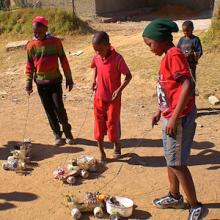
Johannesburg Recycled Material Toys
The photograph shows boys in Diepsloot Township, Johannesburg, South Africa, and one of the rolling toy creations with which the photo shows them playing. These elaborately designed constructions are made from discarded aluminum or steel, soft drink cans, plastic processed food tubs, and water bottles. The material that holds them together is ordinary wire such as coat-hangers.
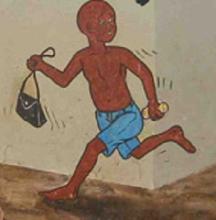
Street Children Billboard, Uganda
The billboard shown in the two photographs carries a slogan used widely by non-governmental organizations (NGOs) to promote public interest in the plight of abandoned, orphaned and runaway children living on the streets in cities of Africa, Asia, the Americas and elsewhere.
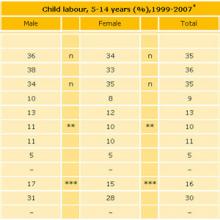
Child Labor Statistics by World Region
The chart shows summative data for several world regions and types of countries on the subject of child labor. The figures refer to the percentage of children 5-14 years of age involved in child labor, meaning as a percentage of the total population of children in a country or region.
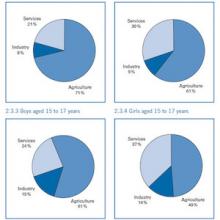
Child Labor Statistics by Gender and Sector
The chart shows the employment sectors for male and female child laborers from age cohorts 5-14 and 15-17. The information is drawn from national child labor surveys in sixteen sample countries. It is based on nationally representative household surveys conducted between 1999 and 2007. The data comes from a study IPEC Statistical Information and Monitoring Programme on Child Labour (SIMPOC).
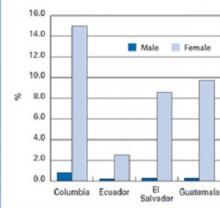
Child Labor in Domestic Service by Gender
The chart shows the proportion of male and female child laborers between the ages of 5 and 14 who are engaged in domestic work for third-party households. As the note on the chart indicates, only those countries in the data sample of 16 nations where domestic work could be distinguished from other kinds of work are featured in this chart.

Yoruba Handwoven Baby Wrapper, Nigeria
Handwoven by a woman in Nigeria, this traditional Yoruba cloth that is tied around the mother’s waist is used as a baby carrier. The baby sits snugly against her mother’s back; her legs wrap around her mother’s waist. The mother’s hands remain free to work or carry other things. The Yoruba wrapper measures 72 inches (183 cm) long and 16 inches (41 cm) wide.